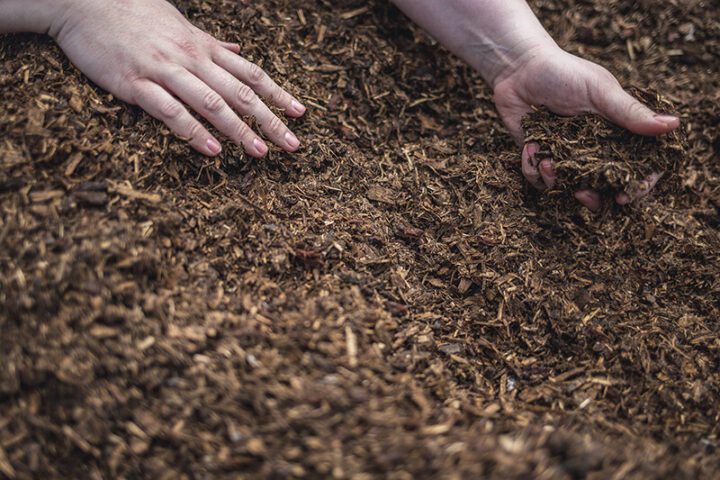Recompose 101: Virtual Tour
Take a tour of the first human composting company in the world from the comfort of your own space
Virtual Tour Sign Up
Recompose’s online tours are similar to our in-person tours but offer the opportunity to be guided virtually through Recompose’s community and ceremony spaces as well as a portion of the vessel array in the Greenhouse, where human composting takes place. During this hour-long experience, you’ll learn about our history, values, goals, and the Recompose human composting process.
Tours are hosted on Zoom, free to attend, and limited to 250 guests.
Virtual Tour Signup
Prefer to visit us in-person?
We offer small group experiences at our Seattle location, too.
Common Questions About Human Composting
-
Human composting is the transformation of a human body into soil. Recompose places each body into a stainless steel vessel along with wood chips, alfalfa, and straw. Microbes that naturally occur on the plant material and on and in our bodies power the transformation into soil.
Over the next five to seven weeks, the body inside the vessel breaks down thanks to the natural action of the microbes. The soil is then removed from the vessel, screened for non-organic items such as hip replacements or stents, and allowed to cure for an additional three to five weeks.
Once the process is complete, the soil can be used on trees and plants, or donated to conservation efforts. Each body creates about one cubic yard of soil.
Watch Recompose Founder and CEO, Katrina Spade, describe how human composting works during her 2023 talk at the End Well Conference.
Explore more
Check out our infographic that shows the steps of the Recompose human composting process.
-
The entire human composting process generally takes between eight to twelve weeks. Our staff will communicate timing and key moments throughout the process. Each body spends about five to seven weeks in a Recompose vessel, then the soil is transferred to an aerated bin to cure for an additional three to five weeks.
Recompose follows all compost-testing regulations put forth by the Washington State Department of Licensing and the Board of Health. The pH range of Recompose compost is usually between 6.5 and 7, which is ideal for most plants.
Watch Recompose Founder and CEO, Katrina Spade, describe timing in the human composting process during her 2023 talk at the End Well Conference.
Explore more
Check out our infographic that shows the steps of the Recompose human composting process.
-
Bones and teeth do not fully break down in the human composting process due to their mineral composition. Similar to other forms of death care, equipment is needed to reduce the bones.
Microbes do the primary work of human composting. By controlling the ratio of carbon, nitrogen, oxygen, and moisture, human composting creates the perfect environment for microbes and beneficial bacteria to thrive. To create that environment, Recompose uses a mixture of plant materials carefully calibrated and tailored to each body.
Recompose staff rotate each vessel at several points during the process to ensure thorough aeration and exposure to resources for the microbes.
Bones are reduced to a fine powder by equipment after the soil is removed from the Recompose vessel. Staff also screen for non-organics such as implants, which are recycled whenever possible. The reduced bone is added back to the compost to help balance the compost nutrients and make minerals available to plants. It continues to break down and return to the environment over time.
Recompose follows all compost-testing regulations put forth by the Washington State Department of Licensing and the Board of Health. The pH range of Recompose compost is usually between 6.5 and 7, which is ideal for most plants.
Learn more about the human composting process.

Sample compost, not created from a human body, that has been through our composting process. -
The Recompose human composting process creates approximately one cubic yard of soil per body which is roughly 3 x 3 x 3 feet. This amount fills the bed of most pickup trucks and weighs approximately from 500 pounds to over 1,000 pounds. The process begins with three cubic yards of plant material.
Families can take some or all of the soil home once the process is complete, and donate what does not go home to conservation efforts. Learn more about how to consider your soil options.
-
You can choose Recompose for human composting from most states. You can contact our staff at (206) 800-8733 or precompose@recompose.life and we can help you arrange for transport.
Most clients that come to us from another state work with a funeral home in their area to arrange for transport. This funeral home will pick up a body at the place of death and arrange for transport to Recompose. When you contact a funeral home, we suggest starting the conversation by saying something like, “I am looking to have my body transported to the Seattle area. I have chosen a funeral home called Recompose to handle my death care services. Can you help me make arrangements?”
In most instances, families can also transport their person to Recompose in their personal vehicle with the correct permits. If you are interested in this option, please contact us and we’re happy to help.
Please note: Bodies that come to Recompose must not be embalmed. While most funeral homes are experienced with transporting bodies, they may not yet have heard of human composting or have experience with this kind of transport. If you have any questions or need help finding a transporting funeral home, Recompose staff can help you.
Our article, How to Arrange for Transport to Recompose, also has information to help you.










